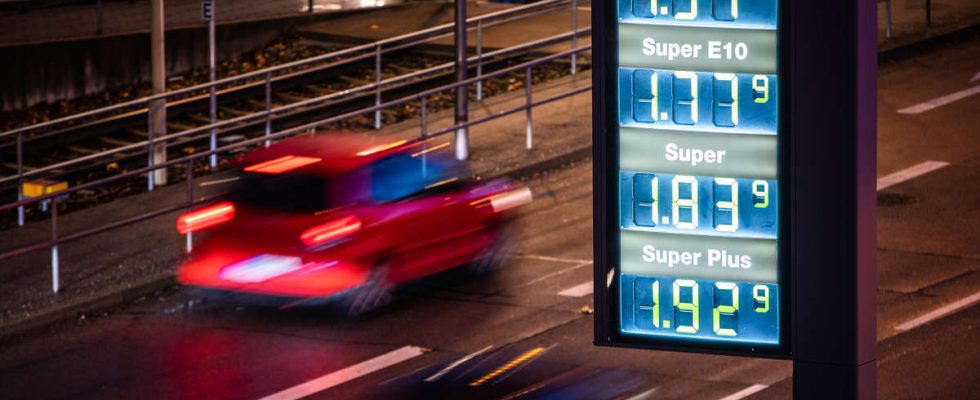In August, fuel prices for diesel and petrol rose again significantly. Drivers should be careful when refueling.
Kassel – Fuel prices in Germany are rising again in Germany, with diesel becoming more expensive for the fourth consecutive week, reports the ADAC. Drivers currently have to pay an average of 1.785 euros for one liter. This means that the fuel is more expensive than it has been since February 2023.
The prices on the fuel gauges could climb even further in the coming months.
© Christoph Schmidt/dpa
E10 and diesel are again more expensive: Experts with fuel price forecast
According to the latest evaluations by the automobile club, the price of petrol increased again this week by 1.5 cents compared to the previous week. According to this, motorists have to pay 1.858 euros for a liter of Super E10 on average nationwide pay. The diesel price rose by 2 cents. The price difference between diesel and Super E10 is thus reduced to less than 9 cents. At the end of May it was more than 23 cents. Diesel is taxed around 20 cents per liter less than petrol.
The ADAC evaluation shows: Fuel prices in Germany are rising again significantly. Diesel is even more expensive for the fourth week in a row.
© ADAC eV
Filling up: Gasoline and diesel prices rise again
“The basic level at which the fuel prices are is clearly too high,” explains the ADAC. Against the background of a currently stable crude oil market, the price increase is not justified; a barrel of Brent oil is also currently a little under US$85, a little less than a week ago.
In order to save costs, the automotive experts therefore recommend a fuel-efficient driving style and fuel tips that help to save a few euros.
This makes refueling cheaper despite higher fuel prices
- Fill up in the evening instead of in the morning: The time affects the price. According to an ADAC study, refueling is cheapest between 6 p.m. and 7 p.m. and from 9 p.m. to 10 p.m., with savings of up to 9 cents per liter compared to the most expensive time at 7 a.m. in the morning.
- Compare prices: The first gas station is not always the cheapest. Before refueling, you should compare prices and avoid more expensive options. Differences between petrol stations can be up to 7 cents per liter, and it is often even more at motorway petrol stations.
- Do without expensive E5: Most petrol engines from November 2010 can fill up with Super E10 without any problems. If possible, do without the more expensive E5 and save an average of 5 to 6 cents per liter.
- Source: ADAC eV
Refuel away from the motorway service station: 50-litre tanks of petrol are on average 20 euros cheaper
Bargain foxes should avoid motorway petrol stations in particular – and prefer to visit nearby petrol pumps in the surrounding area. According to an ADAC analysis, petrol stations often charge crazy prices for fuel, especially at rest stops. Customers of petrol stations on the motorway had to pay up to 69.9 cents more for a liter of Super E10 than at the nearest pump off the motorway. Apps also offer current fuel price comparisons.
Fuel gurgling in car history: 43.5 liters per 100 kilometers



No improvement in sight: the CO₂ tax will be increased in 2024
Incidentally, there is little prospect of an improvement in petrol prices in the coming year either. From the beginning of 2024, the increase in the CO₂ tax for petrol and diesel fuel, originally planned for 2023, will come into force. A price of 35 euros per tonne will then apply, which will lead to an increase of around 1.5 cents per liter of petrol or diesel. After all: A nod against the course that a German professor is calling for: The researcher considers a fuel price of 100 euros per liter to be reasonable.
List of rubrics: © Christoph Schmidt/dpa

